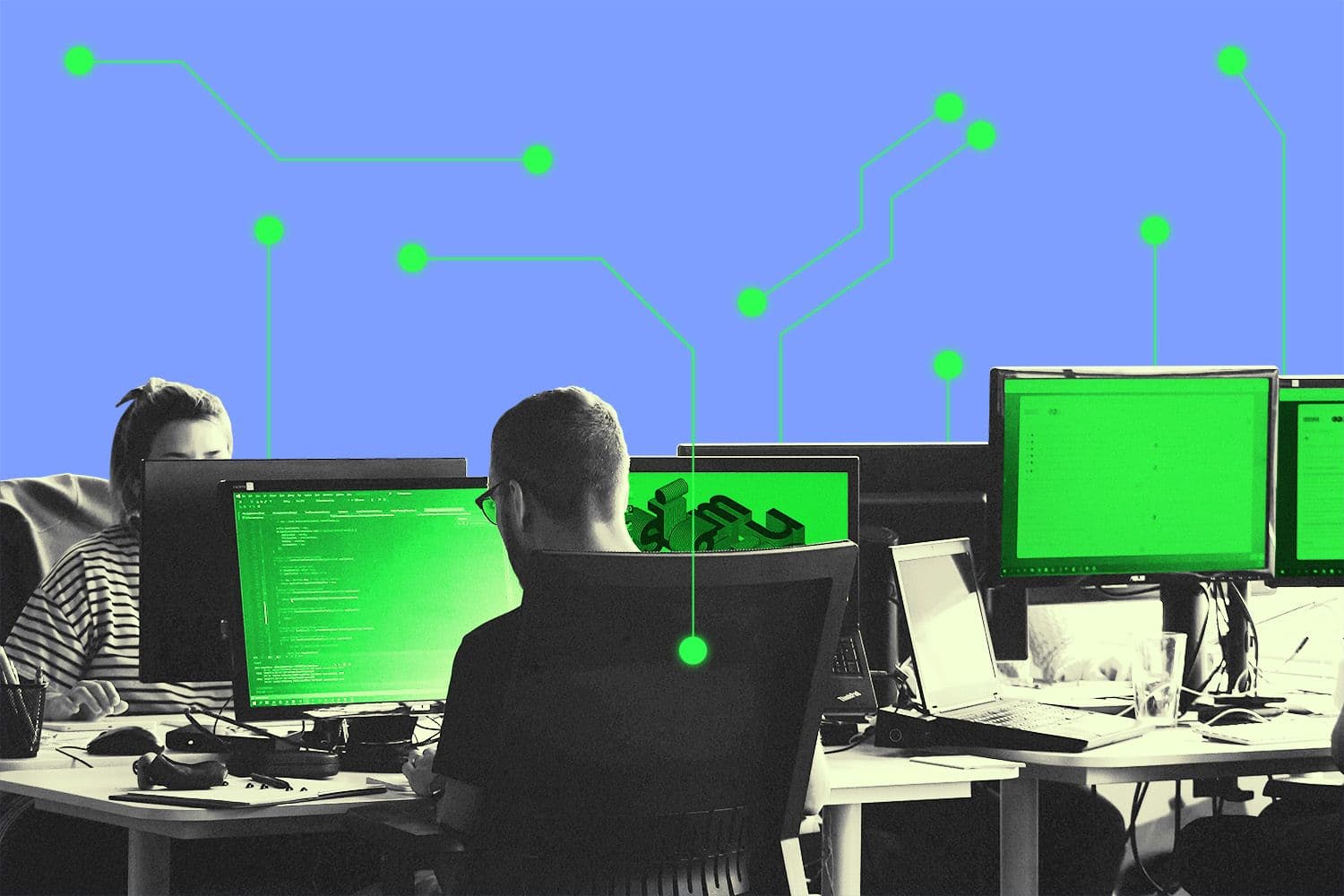Not sure about what the AI transformation means for HR tech? We asked an expert
SHRM’s chief transformation officer, Andy Biladeau, knows a thing or two about managing a digital overhaul.

Anna Kim
• 4 min read
Adam DeRose is a senior reporter for HR Brew covering tech and compliance.
As AI-powered technology continues to change the ways of work, and with more HR tech vendors than Baskin-Robbins flavors, the advancement of transformative technology in the workplace can pose a challenge for HR teams looking to maximize return, enhance the employee experience, and have the right tech stack to meet business needs.
The Society for Human Resource Management (SHRM) in January hired Andy Biladeau to lead the organization and its members through this transformation.
Prior to joining SHRM, Biladeau worked as a VP for Josh Bersin’s namesake HR advisory firm. He also led talent development for Target, and was a people and organizational consultant for PwC. As SHRM’s chief transformation officer, Biladeau is tasked with translating research and data into actionable tools and frameworks and learning programs for HR professionals. He’s also working with senior business executives to understand where technology is going and how that impacts HR.
Biladeau told HR Brew at the SHRM24 conference in Chicago in June that the current AI disruption in the workplace comes on the heels of the Covid-19 pandemic, the last time the C-suite looked to HR to help with urgent business transition.
“Covid-19, as horrific as it was in terms of societal impact, I think for HR, it really was a proving ground to take the seat at the table with the CEO to be able to do crisis response, health and safety, employee well-being, [and] really support all types of work: remote, hybrid, in-person,” he said. “HR is now [being] put to the test again. The stakeholder that we’re partnering with looks a little bit differently now, and that you’re seeing a lot of HR leaders partner closely and tightly with IT.”
The AI moment. Historically, HR tech lived somewhat in isolation of enterprise technology, Biladeau said. HR is a function of many subfunctions: recruiting, L&D, total rewards and comp, and more. Each subfunction required a set of tech solutions to make the work happen. And this was all independent of enterprise technology needed across other business functions.
“Because artificial intelligence is now getting embedded in each of those domain tech stacks, what you’re watching happen is…they’re starting to integrate a lot tighter,” he said. “No longer can I go out and make a recruiting technology selection without fully understanding the applications and how they can integrate and feed my learning and development technologies or career development platforms. You have to be a good neighbor…and think about the impact of your technologies on your peers’ technology stacks.”
Quick-to-read HR news & insights
From recruiting and retention to company culture and the latest in HR tech, HR Brew delivers up-to-date industry news and tips to help HR pros stay nimble in today’s fast-changing business environment.
The moment also comes on the heels of an expansion in the HR technology space. In 2021, and the first half of 2022, venture capital activity in HR tech exploded. Many contend this was due to the urgent demand for remote work technologies. While the dust from the post-pandemic boom may have settled, the vendor landscape remains saturated.
HR leaders are now taking stock as larger HCM players replicate startup technology in their own platforms, Biladeau said. Moreover, with improved AI functionality, some of the transactional work offered by HR professionals has been transferred to the employee.
What’s HR to do? Biladeau suggested that the great promise of the developments inside HCMs and HR technologies is to free up HR departments to upskill into strategic partners, but in many instances over the last five to 10 years, “HR wasn’t ready to be that strategic business consultant.”
Biladeau said smart HR leaders are identifying capability gaps, upskilling HR pros and building “agility” into their teams “because their job is going to change in six months, but it’s going to change again in another six months after that, and again another six months after that.”
He also suggested working with IT on understanding common language and definitions around HR tech, especially around AI.
“These are terms that your employees don’t necessarily know, and if they start using them inconsistently, it’s going to create even more confusion around the topic. And so I highly encourage HR functions to align on common vocabulary,” he said.
When it comes to employee AI use, he recommended HR teams talk with employees and understand how they’re using the tech, and then create informed policy guiding its use.
“Once you get a sense for the volume and type of usage your employees are experiencing with the tools, it’s going to allow you to work better with IT and probably legal to design acceptable-use policy for your organization,” he said.
Quick-to-read HR news & insights
From recruiting and retention to company culture and the latest in HR tech, HR Brew delivers up-to-date industry news and tips to help HR pros stay nimble in today’s fast-changing business environment.